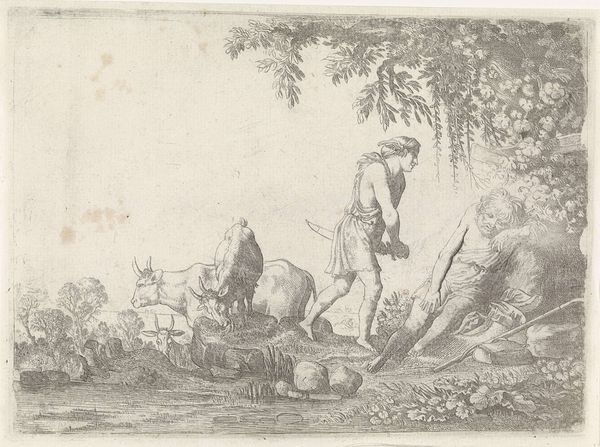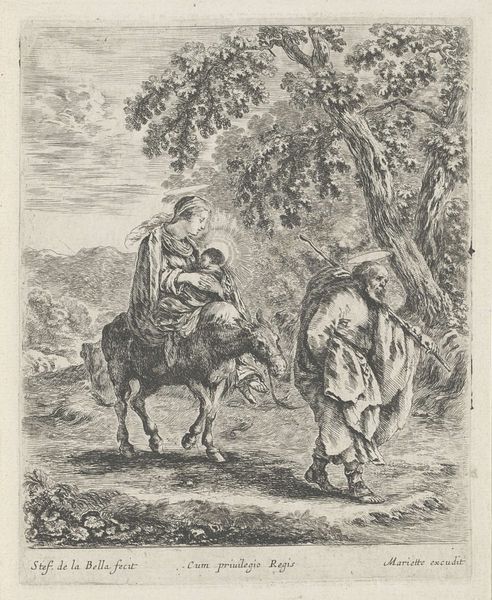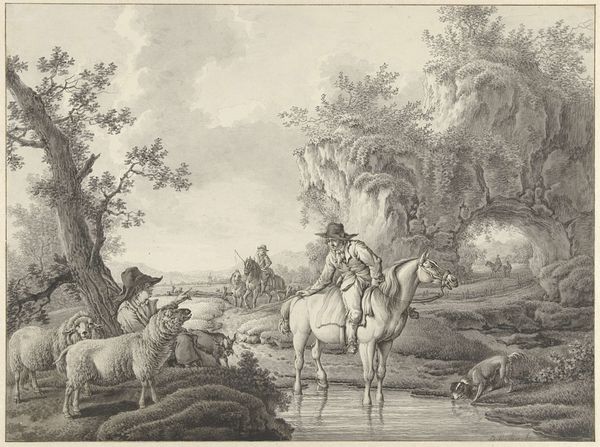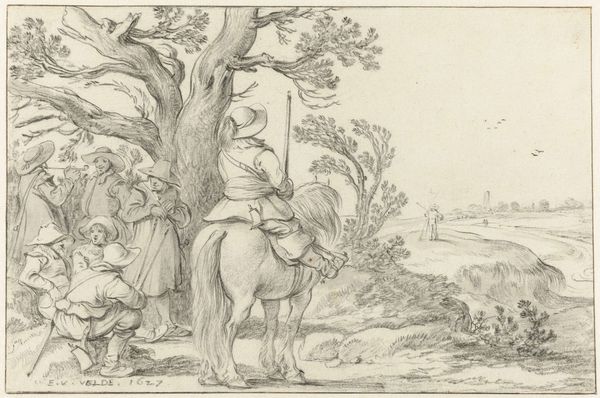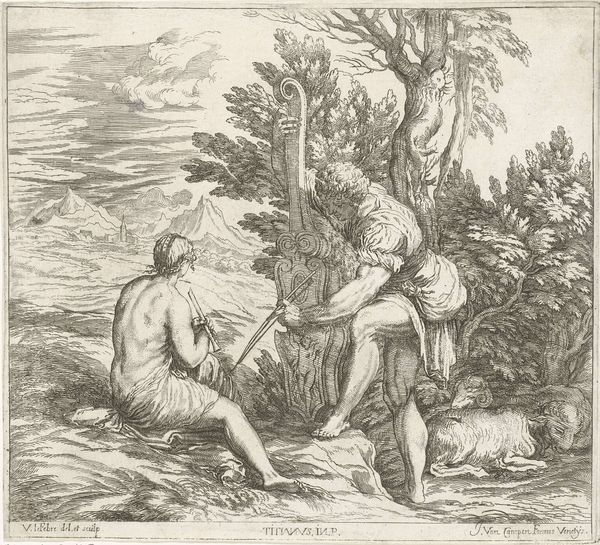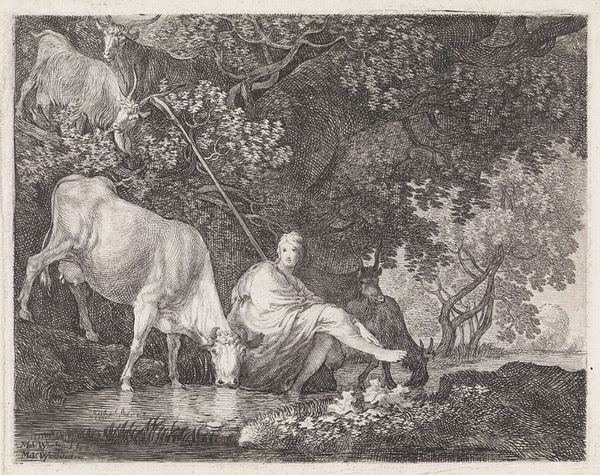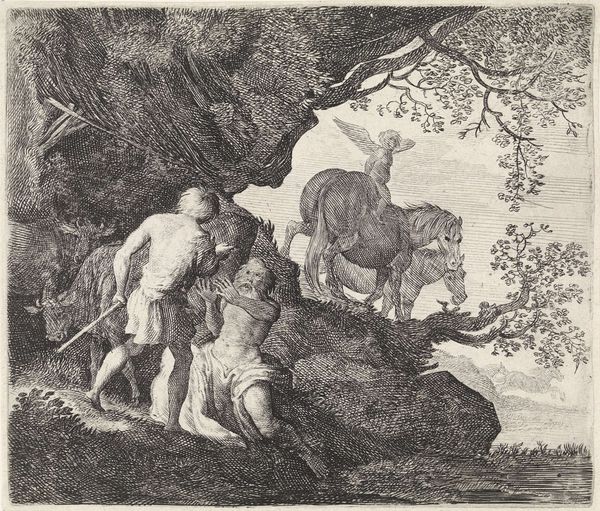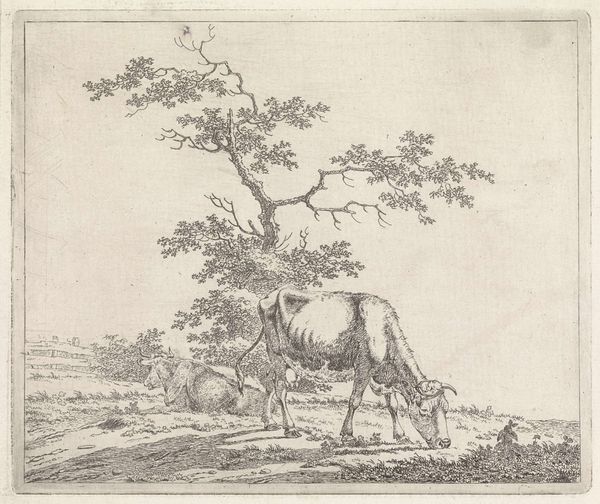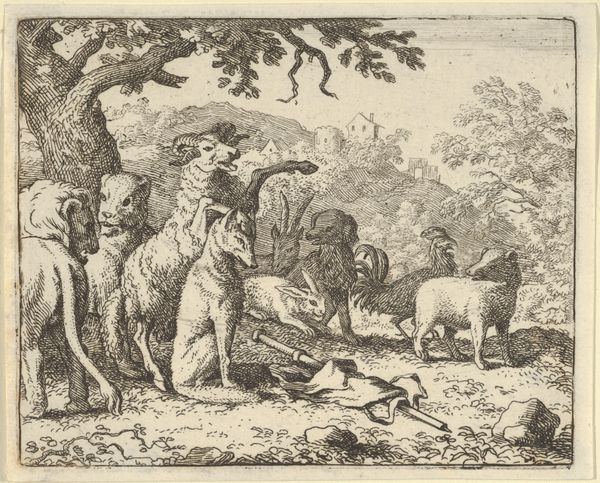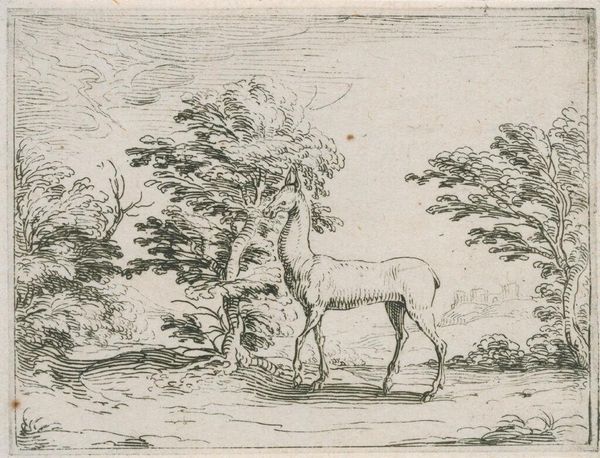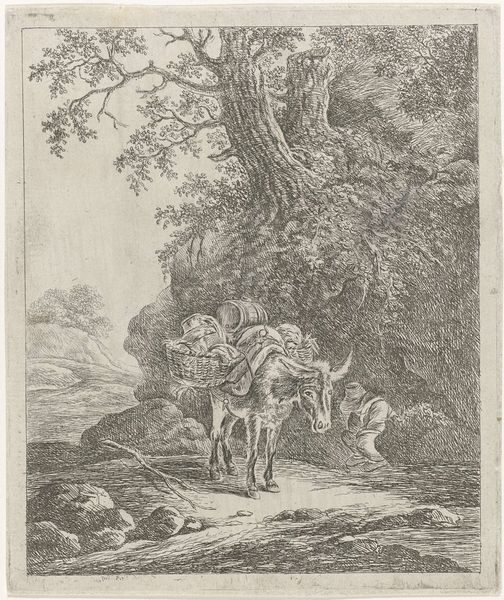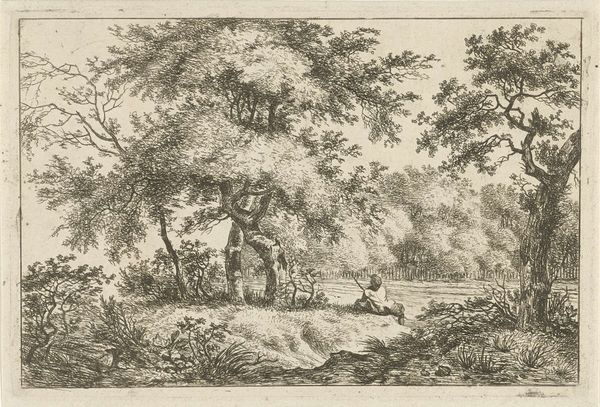
drawing, print, etching
#
drawing
#
baroque
# print
#
etching
#
landscape
#
figuration
#
genre-painting
Dimensions: height 130 mm, width 183 mm
Copyright: Rijks Museum: Open Domain
Editor: Here we have "Argus bewaakt zijn kudde," or "Argus Herding his Flock," created sometime between 1618 and 1628 by Moyses van Wtenbrouck. It's an etching – quite small and detailed. I'm immediately struck by the sort of weary, almost melancholic, mood it evokes. What do you see in this piece? Curator: Ah, yes. Weariness. It’s in Argus' slouch, in the tired droop of those animals’ heads. And that wild hair! The baroque is often associated with drama, movement, intense emotion... but here, there’s a stillness, a quiet contemplation. Maybe Wtenbrouck is reflecting on the burden of responsibility, or even the loneliness of command? Does that resonate with you? Editor: It does, especially the loneliness aspect. He seems very isolated. So Argus, from Greek mythology, right? The one with a hundred eyes? Curator: Precisely! Hera charged him with guarding Io, who Zeus had transformed into a cow. In a way, it’s interesting to think of the myth reimagined as this… almost mundane scene. Where is the drama, you ask? Where are all of Argus' eyes? I love that the artist almost ignores the spectacle. Perhaps the artist focused instead on evoking the inner world and emotional landscape of such an ordinary task with an ordinary landscape and subject. How very modern! Editor: So interesting, shifting the focus like that. I guess I was expecting something grander, more…obvious. Curator: Perhaps *we* have the modern urge to *find* it… It’s easy to miss the subtleties in plain sight. Baroque art offers layers beyond spectacle. Editor: I see what you mean. Looking closer, that weariness feels so much more profound now. Thanks for helping me to see that!
Comments
No comments
Be the first to comment and join the conversation on the ultimate creative platform.
